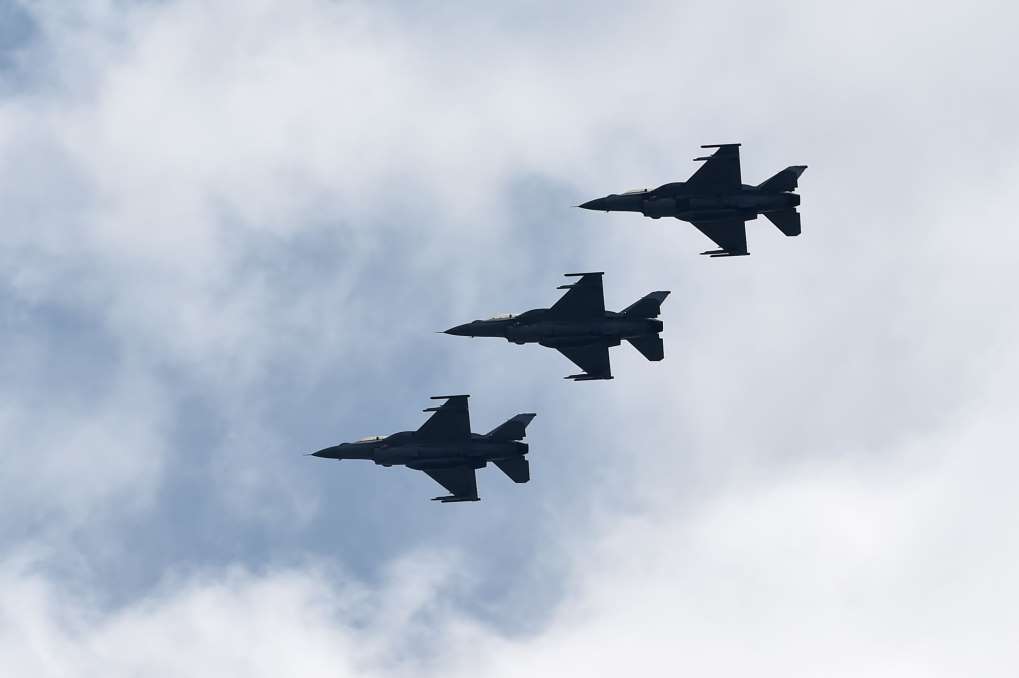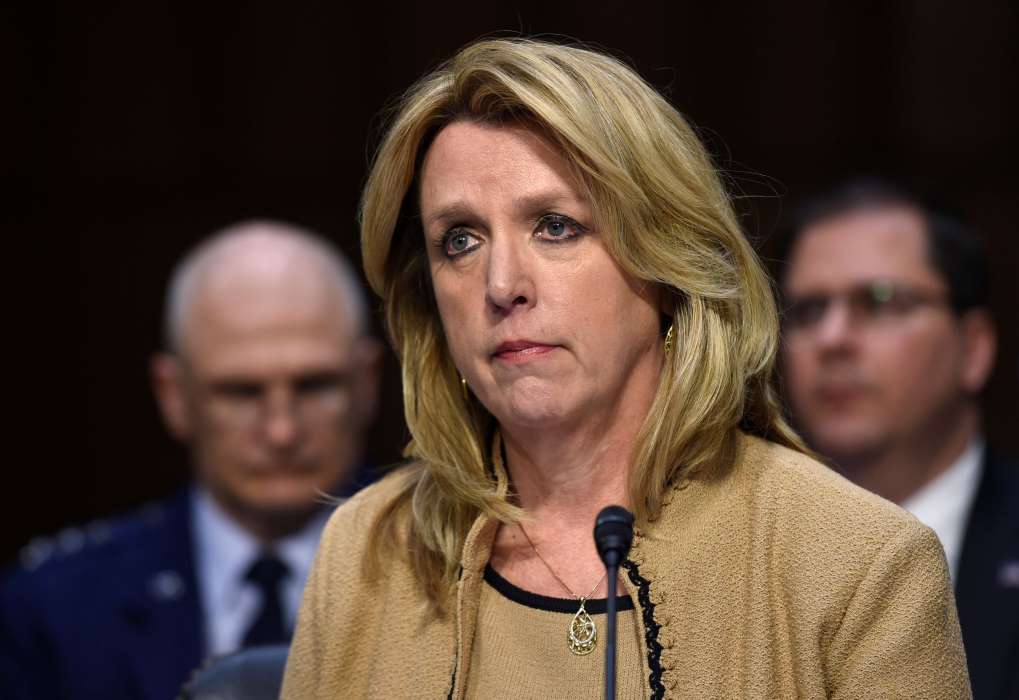December 6, 2016
As a new American president bent on retaining American jobs prepares to take office, the Obama administration and the U.S. defense industry are working on a deal with the Indian government to build iconic U.S. combat aircraft in India.

December 6, 2016
As a new American president bent on retaining American jobs prepares to take office, the Obama administration and the U.S. defense industry are working on a deal with the Indian government to build iconic U.S. combat aircraft in India.

Three F-16 aircraft take part in a media preview in Singapore. The fighter plane, flown by air forces around the world, may soon be manufactured only in India.
In recent months, Lockheed Martin and Boeing have made proposals to the Indian government to manufacture fighter jets — the F-16 Fighting Falcon and the F/A-18 Super Hornet — in India as the country seeks to modernize its rapidly aging fleet of largely Russian-built airplanes.
In both cases, the aviation companies would be building production facilities in India; Lockheed Martin proposes to move its entire F-16 assembly line from Texas to India, making India the sole producer of the single-engine combat aircraft.
The U.S. military is phasing out the F-16 for its own use, but other countries remain as likely customers.
The proposals have the strong backing of the Obama administration, which has sought a closer connection with the Indian military in recent years. Air Force Secretary Deborah Lee James said she was “optimistic” about the prospect of a deal after a visit to New Delhi in August, and Defense Secretary Ashton B. Carter is set to return to India next week, with procurement high atop the list of discussion topics.
But the election of a billionaire businessman focused on keeping jobs at home, rather than creating them overseas, has brought a measure of uncertainty to the talks.
“What will be the U.S. policy posture now that the new president-elect is in the mix?” said one high-level official at an American defense firm in India, who spoke on the condition of anonymity to discuss internal negotiations. “Is he going to continue the policy of engaging in India on co-production and co-development? All of those are unknown at this point.”
On Thursday, President-elect Donald Trump appeared at a Carrier plant in Indiana where his team had brokered a deal to save about 1,000 jobs, and on Sunday he let fire a series of tweets that implied a new tax penalty on goods produced by companies that leave the United States.
Also from The Washington Post: Fact-checking Trump's misleading numbers about the Carrier deal
“Please be forewarned prior to making a very expensive mistake! THE UNITED STATES IS OPEN FOR BUSINESS,” he tweeted.
On the campaign trail he had railed against job losses to Asia and Mexico.

Air Force Secretary Deborah Lee James testifies before the Senate Armed Services Committee in January.
“We are living through the greatest jobs theft in the world,” Trump said last month, citing American companies that have laid off workers and moved jobs to India, Singapore and Mexico. “It’s getting worse and worse and worse.”
Officials at Lockheed Martin and Boeing said that any partnership to manufacture jets in India would not result in a net loss of American jobs but would create Indian employment — about 1,000 positions in the case of Lockheed Martin.
About 300 mechanics on the Fort Worth assembly line would be moved to the F-35 assembly line at the same plant. Others would be given an opportunity to apply for other jobs on the newer F-35, Lockheed officials said, although they concede that some positions would be lost in the move because of attrition or retirements.
“I see this as a great opportunity for all parties involved,” said Randy Howard, director of business development for Lockheed’s integrated fighter group. “It doesn’t take jobs away from the U.S., it extends existing jobs, and not just for Fort Worth but for many other companies around the U.S. that build parts for the F-16.”
Nevertheless, workers in Fort Worth say they are worried about the future.
“Wouldn’t you be?” said Earnest Boone, president of the District Lodge 776, International Association of Machinists and Aerospace Workers, which represents Lockheed employees.
In October, the Indian government sent a letter to foreign missions and aerospace manufacturers inquiring about single-engine fighter aircraft that could be manufactured locally.
India wants to co-produce the fighter jets as part of its Make in India program, which has the lofty goal of expanding the manufacturing base to 25 percent of the gross domestic product in the next six years.
Nitin Wakankar, a spokesman for India’s Ministry of Defense, said that the process of selecting the new jet “has not started yet,” so answering detailed questions would be premature.
India’s costly earlier effort to partner with the French company Dassault Aviation for 126 jets unraveled, and the government ended up buying only 36 ready-made Rafale planes this year.
Analysts say Lockheed’s main rival in the single-engine sphere is Sweden’s Saab Group and its Gripen fighter. Chicago-based Boeing has also proposed to make its twin engine F/A-18 in India. Boeing recently took a group of Indian defense journalists on a whirlwind tour of Australia and the United States to show off its program.
The U.S. Air Force is phasing out the F-16 in favor of the F-35 aircraft in coming years and the company has no orders for the F-16 beyond October 2017, but it is seeking other customers and does not plan to dismantle the assembly line just yet.
The F-16 airplane remains one of the most widely used aircraft in the world, and Lockheed is continuing to negotiate deals to sell the fighter to other countries. Those F-16s would be made in India under the deal once the new assembly line was up and running, Howard said. The aircraft has been made in joint ventures with other nations before, but “we’ve never offered our only production line to another country,” Howard said. “It’s unprecedented.”
Lockheed has promised that India would not only manufacture and export its jets but would play a “critical role” in supporting a fleet of about 3,200 F-16s in operation around the world, said Jon Grevatt, an Asia Pacific defense industry analyst with IHS Jane’s, a defense analysis firm. “That’s a big carrot,” he noted.
A potential stumbling block to the deal is the willingness of the U.S. government to part with enough of its mission system technology to make the package palatable to the Indians. The aircraft is also viewed negatively by some in the defense establishment here as a dated platform that first rolled off the assembly line in 1978 — despite its current state-of-the-art avionics. Another strike against it, for some, is that it is the fighter aircraft used by archrival Pakistan.
“The F-16 is a good aircraft, it has lived its life, but its time is over,” said Muthumanikam Matheswaran, a retired Indian Air Force air marshal and analyst.
A greater concern, said Pushan Das, a fellow at the Observer Research Foundation in Delhi, is whether “India wants to be seen as close to the United States and building U.S. fighter aircraft, or does it want to be more politically neutral and choose a partner like Sweden, given the fact that New Delhi needs to manage its relationship with Russia and China. That’s the main thing.”
India’s defense procurement typically moves at a glacial pace. Ashley J. Tellis, a scholar for the Carnegie Endowment for International Peace, wrote in a March paper that the Indian Air Force is in “crisis” and that its troubled acquisition and development programs threaten its air superiority over rapidly modernizing rivals Pakistan and China. The country hopes to expand its fleet to from 36.5 to 42 to 45 squadrons by 2027 — an unlikely prospect, the study found, because of budget constraints, slow procurement and other limitations.
Courtesy: Washington Post
















































































































